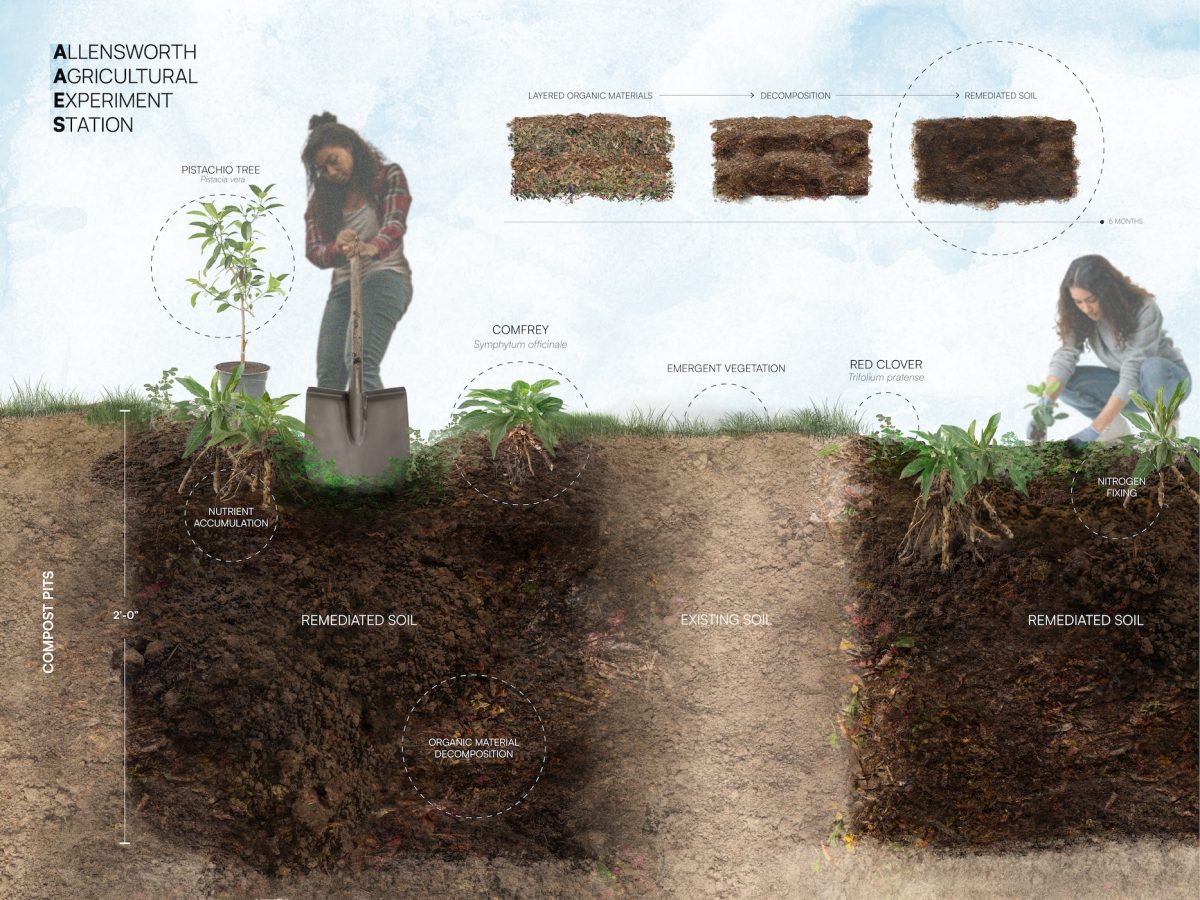The Allensworth Agricultural Experiment Station
The Allensworth Agricultural Experiment Station is a 4,000 square foot site in Allensworth, CA that will test out different types of soil revitalization techniques and agroecological planting configurations that can increase soil fertility, create habitat, engage the local community. Built in collaboration with the non-profit Allensworth Progressive Association (APA), the project aims to determine the most effective methods for remediating and cultivating the severely degraded soil with the goal of employing the same methods on a larger parcel of land in the future for the APA’s aspirational agroecological, educational community farm. Upon its founding in 1908, Allensworth was the first town in California to be founded and governed by Black Americans and was intended to be a “Tuskegee of the West”, inspired by the university in Alabama established by Booker T. Washington, which provided vocational training for Black students with an emphasis on agriculture. The AAES is inspired by the Tuskegee Agricultural Experiment Station, a 10-acre farm run by George Washington Carver at the university from 1897-1943, which experimented with different organic farming processes and provided education on cost-effective and sustainable methods of food production for Black farmers. This project also aims to go beyond the scientific and ecological aspects of soil rehabilitation for food production and engages in a larger conversation about BIPOC liberation on the land. Large-scale agricultural production in the US has its origins in the plantation economy and the forced labor of enslaved Africans and is sustained by the continued exploitation of Latinx farmworkers and other communities of color. AAES will create a space to execute agricultural practices that feed soil using organic materials, have closed-loop systems for waste, encourage ecological diversity, are able to produce food in extreme arid climates, and honor the culturally-significant and place-based land stewardship practices of the Allensworth community. In a time of increasing climate uncertainty exacerbated by industrial farming, this project can hopefully contribute to an alternative framework for food cultivation and soil regeneration in the Central Valley that highlight the contributions BIPOC communities have made to agriculture, and honor the liberatory vision of Allensworth.

